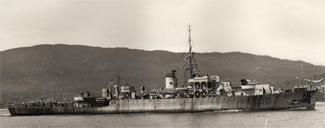 01-28-08, 01:52 PM
01-28-08, 01:52 PM
|
#22
|
Commodore 
Join Date: Feb 2005
Posts: 622
Downloads: 0
Uploads: 0
|

I found this at www.submarineresearch.com
Quote:
Test depth can be thought of as an engineering estimate of what pressure will be required on one side of a hull to breach the hull, taking into account such factors of hull strength as hull diameter, hull thickness, framing, and intrusions. Naval engineers tend to be conservative in their estimates and the varied factors tend to render an estimate as just that, an estimate. The engineers back into the problem by first estimating the crush depth of a hull, then creating the theoretical test depth by a applying a decimal factor to the crush depth. Different national navies apply varying factors. The United States Navy has used a factor of 1.5, but this has changed many times. Of course, computers are able to make such estimates much more trust-worthy, however, the accounts described "Steep Angles and Deep Dives" are, for the most part, in hulls designed before the advent of the computer.
In the American Navy, hull designers depend on the experience of submarines to verify their estimates. Buships requires a submarine captain to immediately notify both Buships and the Chief of Naval Operations in writing when a boat under his command exceeds test depth. The captain's professional career may be jeopardized by a zealous attention to recording a dive that went wrong. Only in wartime can a captain reasonably explain the need to exceed test depth. For this reason submarines exceeding test depth sometimes fail to make note of the dive in their deck logs.
The simplest application of determining hull strength is the hull thickness. The thicker the hull metal the stronger the hull and the deeper the test depth, assuming all other factors are constant. Prior to the Balao class U.S. submarine, hulls were built of mild steel (MS) which had a maximum tensile strength of 60,000 pounds per square inch and a yield strength of 45,000 psi with 23 percent elongation. The thickness of hull plating until about 1943 was specified in terms of the weight of a square foot of plate rather than the actual thickness, and this was gradually increased from 20 pound plate (approximately one half inch) to twenty seven and a half pounds per square inch in the Salmon (SS-182).
Another change in the Balao class was the change in material used for hulls. High tensile steel was a chromium-vanadium alloy with a maximum tensile strength of 50,000 psi with 20 percent elongation. When the composition was changed to titanium-manganese alloy, because of wartime shortages, the strength dropped to 45,000 psi. The Salmon's hull was about seven eighths of an inch thick giving her a test depth of 250 feet. Conning tower shells were thicker as protection against surface guns.
The thick-skinned boats came along in 1942 with a test depth of 412 feet. These boats had the same seven eighths inch thick hull as Salmon, but the quality of hull steel ie., high tensile strength steel had significantly improved. The crush depth of these boats was estimated to be around 450 feet. Fleet type submarines built during the Second World War were to last through much of the cold war. These boats have careers that have lasted over fifty years with many still being used by foreign navies.
|
Anyone know any similar figures for u-boat hull steel?
P.S. www.uboat.net mentions that type ViiB/C hulls were made from steel approx. 0.73 inches thick, but I cannot find anything about the type of steel used.
P.P.S. from www.uboatarchive.net in the REPORT ON "U-570" (H.M.S. "GRAPH") (U-570, a VIIC was captured by the British in 1941)
http://www.uboatarchive.net/U-570BritishReport.htm
page 37
Quote:
Hull
The hull is of all welded construction, the only riveting being on the engine room cover plate and the flanges of the dished ends of No. 3 main ballast tank.
2. The frames are of bulb section bars with no flanges. There are 82 frames.
3. The thickness of the pressure hull plating is 0.88 in., decreasing to 0.63 in. towards the ends.
4. The keel is 1.8 ft. high and 3.6 ft. wide. It is free flooding and iron ballast is carried at the ends.
5. The thickness of the pressure plating of the conning tower is 1.26 in.
6. The endings of the pressure hull are formed with dished plates which carry the housings of the torpedo tubes. The thickness of these endings is 1.378 in.
|
__________________
My Father's ship, HMCS Waskesiu (K330),
sank U257 on 02/24/1944
 running SHIII-1.4 with GWX2.1 and SHIV-1.5 with TMO/RSRDC/PE3.3 under MS Vista Home Premium 32-bit SP1
running SHIII-1.4 with GWX2.1 and SHIV-1.5 with TMO/RSRDC/PE3.3 under MS Vista Home Premium 32-bit SP1
ACER AMD Athlon 64x2 4800+, 4GB DDR2 RAM, 400GB SATA HD
Antec TruePower Trio 650watt PSU
BFG GeForce 8800GT/OC 512MB VRAM, Samsung 216BW widescreen (1680x1050) LCD
Last edited by seafarer; 01-28-08 at 02:07 PM.
|

|

|